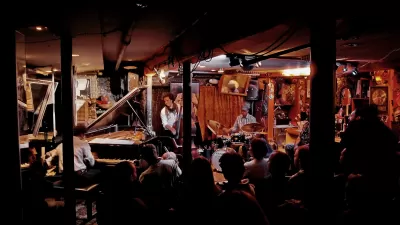With of support of leaders in Beijing, Chinese investors are making their presence known in U.S. commercial and residential real estate markets. The levels of foreign investment are reminiscent of the Japanese buying binge of the 1980s.
"Undaunted by Japan’s real estate misadventures in the 1980s — some Japanese investors wildly overpaid for United States property, and Japan eventually suffered one of the biggest property market collapses in history — Chinese investors are fanning out in the United States," reports Julie Creswell.
"What began with a few isolated purchases two years ago has become a hunt for trophy properties and billion-dollar deals. So far, the kind of fears that arose in the 1980s — unfounded talk that Japan was 'buying up' America — have not surfaced this time. To the contrary, the Chinese, or at least their money, are being welcomed, even celebrated."
"The deals go beyond shimmering glass-and-steel towers: Chinese and Hong Kong investors have also become the second-largest foreign buyers of United States homes, after the Canadians," she adds.
“'They’re just getting started,' said Steve Collins, the international director at Jones Lang LaSalle Capital, a real estate services firm that recently held conferences for potential buyers in Shanghai and Beijing. 'There’s just been some incredible wealth creation there.'”
FULL STORY: Chinese Investors Pursue U.S. Property Deals

Study: Maui’s Plan to Convert Vacation Rentals to Long-Term Housing Could Cause Nearly $1 Billion Economic Loss
The plan would reduce visitor accommodation by 25,% resulting in 1,900 jobs lost.

North Texas Transit Leaders Tout Benefits of TOD for Growing Region
At a summit focused on transit-oriented development, policymakers discussed how North Texas’ expanded light rail system can serve as a tool for economic growth.

Why Should We Subsidize Public Transportation?
Many public transit agencies face financial stress due to rising costs, declining fare revenue, and declining subsidies. Transit advocates must provide a strong business case for increasing public transit funding.

How to Make US Trains Faster
Changes to boarding platforms and a switch to electric trains could improve U.S. passenger rail service without the added cost of high-speed rail.

Columbia’s Revitalized ‘Loop’ Is a Hub for Local Entrepreneurs
A focus on small businesses is helping a commercial corridor in Columbia, Missouri thrive.

Invasive Insect Threatens Minnesota’s Ash Forests
The Emerald Ash Borer is a rapidly spreading invasive pest threatening Minnesota’s ash trees, and homeowners are encouraged to plant diverse replacement species, avoid moving ash firewood, and monitor for signs of infestation.
Urban Design for Planners 1: Software Tools
This six-course series explores essential urban design concepts using open source software and equips planners with the tools they need to participate fully in the urban design process.
Planning for Universal Design
Learn the tools for implementing Universal Design in planning regulations.
City of Santa Clarita
Ascent Environmental
Institute for Housing and Urban Development Studies (IHS)
City of Grandview
Harvard GSD Executive Education
Toledo-Lucas County Plan Commissions
Salt Lake City
NYU Wagner Graduate School of Public Service





























